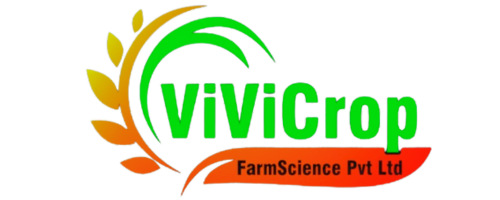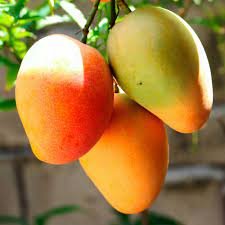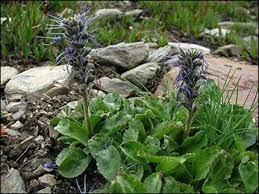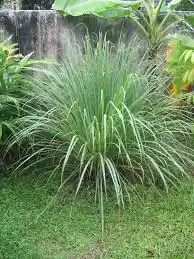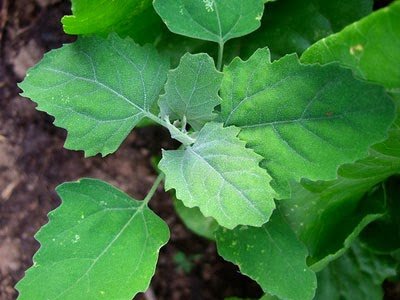Palak Nutrition Requirements
Nutrition required by Palak at each stage of its life cycle.
SOIL PREPARATION

Soil Preparation
Soil preparation is crucial for growing healthy and productive Palak (Spinach) plants. Here's a guide to soil preparation method and nutrition requirements at the soil preparation stage for Palak:
### Soil Preparation Method:
1. **Site Selection**:
- Choose a well-draining location with full sun to partial shade exposure for Palak cultivation.
- Ensure the soil pH is between 6.0 to 7.0, slightly acidic to neutral.
2. **Soil Testing**:
- Conduct a soil test to determine the nutrient levels, pH, and texture of the soil.
- Amend the soil based on the soil test results to correct any deficiencies and optimize nutrient availability.
3. **Clearing and Tilling**:
- Clear the planting area of weeds, rocks, and debris.
- Till the soil to a depth of 6 to 8 inches to loosen compacted soil and improve aeration.
4. **Organic Matter Addition**:
- Incorporate well-aged compost or organic matter into the soil to improve soil structure, fertility, and moisture retention.
- Apply compost at a rate of 2 to 3 inches and mix thoroughly with the soil.
5. **Soil Leveling**:
- Level the soil surface using a rake to create a smooth and even planting bed.
6. **Mulching** (Optional):
- Apply a layer of organic mulch such as straw or shredded leaves to conserve soil moisture, suppress weed growth, and maintain soil temperature.
### Nutrition Requirement:
Palak plants have specific nutrient requirements for healthy growth and optimal yield. Here are the key nutrients needed during the soil preparation stage:
1. **Nitrogen (N)**:
- Nitrogen is essential for leafy green growth in Palak plants.
- Apply nitrogen-rich organic amendments such as compost or well-rotted manure to the soil during soil preparation.
2. **Phosphorus (P)**:
- Phosphorus promotes root development and overall plant growth.
- Incorporate phosphorus-rich amendments such as bone meal or rock phosphate into the soil.
3. **Potassium (K)**:
- Potassium enhances Palak's resistance to diseases and stress.
- Potassium-rich amendments such as wood ash or potassium sulfate can be added to the soil.
4. **Micronutrients**:
- Ensure the soil is adequately supplied with essential micronutrients such as iron, manganese, zinc, and copper.
- Use micronutrient-rich organic fertilizers or amendments to meet the plant's micronutrient needs.
### Additional Tips:
- **Avoid Over-fertilization**: While amending the soil with organic matter and fertilizers, avoid overloading the soil with nutrients, as excessive fertilization can lead to nutrient imbalances and environmental pollution.
- **Regular Maintenance**: After soil preparation, continue to monitor soil moisture levels, weed growth, and plant nutrition throughout the growing season to ensure optimal Palak growth and productivity.
By following these soil preparation methods and providing the necessary nutrition requirements, you can create a favorable growing environment for Palak plants, leading to healthy growth and abundant harvests.
Early Growth (Germination to Establishment)

Early Growth
During the early growth stage (germination to establishment) of Palak (Spinach), the plant has specific nutritional requirements to support healthy development. Here are the key nutrients needed during this stage:
1. **Nitrogen (N)**:
- Nitrogen is crucial for promoting vigorous vegetative growth, including leaf and stem development, during the early growth stage.
- Apply nitrogen-rich fertilizers or organic amendments to provide an initial boost to the plants. Nitrogen encourages green leafy growth, which is essential for Palak.
2. **Phosphorus (P)**:
- Phosphorus plays a vital role in promoting strong root development and overall plant establishment.
- Ensure the soil contains an adequate level of phosphorus by incorporating phosphorus-rich fertilizers or organic amendments during soil preparation.
3. **Potassium (K)**:
- Potassium contributes to overall plant vigor and helps Palak plants withstand environmental stress factors.
- Provide potassium through potassium-rich fertilizers or organic amendments to support early growth and establishment.
4. **Micronutrients**:
- Essential micronutrients such as iron, manganese, zinc, and copper are necessary for healthy Palak growth.
- Ensure the soil contains sufficient levels of micronutrients by incorporating micronutrient-rich fertilizers or organic matter.
5. **Calcium (Ca)**:
- Calcium is essential for cell wall development and structural integrity in plants.
- Ensure the soil pH is within the optimal range (6.0 to 7.0) to promote calcium availability to the Palak plants.
6. **Magnesium (Mg)**:
- Magnesium is a component of chlorophyll and plays a vital role in photosynthesis.
- Monitor magnesium levels in the soil and provide supplemental magnesium if deficiencies are detected.
7. **Water**:
- Adequate water supply is crucial for Palak germination and establishment.
- Maintain soil moisture levels consistently to support seed germination and early seedling growth.
8. **pH Balance**:
- Ensure the soil pH is within the optimal range (6.0 to 7.0) to promote nutrient availability and uptake by Palak plants during the early growth stage.
By providing the necessary nutrients and maintaining optimal growing conditions, you can support healthy germination and establishment of Palak plants during the early growth stage, leading to robust growth and vigorous development. Regular monitoring of plant growth and nutrient levels can help adjust fertilizer applications as needed to meet the plant's nutritional requirements.
Tillering Stage (Shoot Development)

Tillering Stage
During the tillering stage (shoot development) of Palak (Spinach) plants, they have specific nutritional requirements to support vigorous growth and development. Here are the key nutrients needed during this stage:
1. **Nitrogen (N)**:
- Nitrogen is essential for promoting leafy green growth and overall plant vigor during the tillering stage.
- Apply nitrogen-rich fertilizers or organic amendments to provide a continuous supply of nitrogen to support shoot development and leaf formation.
2. **Phosphorus (P)**:
- Phosphorus promotes root development and enhances nutrient uptake, which is crucial during the tillering stage.
- Ensure the soil contains an adequate level of phosphorus by incorporating phosphorus-rich fertilizers or organic amendments to support healthy shoot growth.
3. **Potassium (K)**:
- Potassium contributes to overall plant health and helps Palak plants withstand environmental stress factors during the tillering stage.
- Provide potassium through potassium-rich fertilizers or organic amendments to support shoot development and improve plant resilience.
4. **Micronutrients**:
- Essential micronutrients such as iron, manganese, zinc, and copper are necessary for healthy shoot development and leaf formation.
- Ensure the soil contains sufficient levels of micronutrients by incorporating micronutrient-rich fertilizers or organic matter to support Palak growth during the tillering stage.
5. **Calcium (Ca)**:
- Calcium is essential for cell wall development and structural integrity in plants, which is important during shoot development.
- Ensure the soil pH is within the optimal range (6.0 to 7.0) to promote calcium availability to the Palak plants during the tillering stage.
6. **Magnesium (Mg)**:
- Magnesium is a component of chlorophyll and plays a vital role in photosynthesis, which is essential for shoot development and leaf formation.
- Monitor magnesium levels in the soil and provide supplemental magnesium if deficiencies are detected to support Palak growth during the tillering stage.
7. **Water**:
- Adequate water supply is crucial for Palak shoot development and leaf formation during the tillering stage.
- Maintain consistent soil moisture levels to support healthy growth and development of Palak shoots.
8. **pH Balance**:
- Ensure the soil pH is within the optimal range (6.0 to 7.0) to promote nutrient availability and uptake by Palak plants during the tillering stage.
By providing the necessary nutrients and maintaining optimal growing conditions, you can support vigorous shoot development and leaf formation in Palak plants during the tillering stage, leading to robust growth and healthy foliage. Regular monitoring of plant growth and nutrient levels can help adjust fertilizer applications as needed to meet the plant's nutritional requirements during this stage.
Flowering

Flowering
During the flowering stage of Palak (Spinach) plants, there are specific nutritional requirements to support flowering, seed development, and overall plant health. Here are the key nutrients needed during this stage:
1. **Nitrogen (N)**:
- Nitrogen is essential for promoting healthy foliage growth and supporting the formation of flowers and seeds.
- Maintain a steady supply of nitrogen through nitrogen-rich fertilizers or organic amendments to support Palak plants during the flowering stage.
2. **Phosphorus (P)**:
- Phosphorus supports flower and seed development, as well as overall plant energy transfer and metabolism.
- Ensure an adequate supply of phosphorus through phosphorus-rich fertilizers or organic amendments to promote robust flowering and seed set in Palak plants.
3. **Potassium (K)**:
- Potassium contributes to overall plant health and helps Palak plants withstand environmental stress factors during the flowering stage.
- Provide potassium through potassium-rich fertilizers or organic amendments to support flower and seed development and improve plant resilience.
4. **Calcium (Ca)**:
- Calcium is essential for cell wall development and structural integrity in plants, which is important during flower and seed formation.
- Ensure the soil pH is within the optimal range (6.0 to 7.0) to promote calcium availability to Palak plants during the flowering stage.
5. **Magnesium (Mg)**:
- Magnesium is a component of chlorophyll and plays a vital role in photosynthesis, which supports flower and seed development.
- Monitor magnesium levels in the soil and provide supplemental magnesium if deficiencies are detected to support Palak growth during the flowering stage.
6. **Micronutrients**:
- Essential micronutrients such as iron, manganese, zinc, and copper are necessary for healthy flower and seed development in Palak plants.
- Ensure the soil contains sufficient levels of micronutrients by incorporating micronutrient-rich fertilizers or organic matter to support Palak growth during the flowering stage.
7. **Water**:
- Adequate water supply is crucial for Palak flower and seed development during the flowering stage.
- Maintain consistent soil moisture levels to support healthy flowering and seed set in Palak plants.
8. **pH Balance**:
- Ensure the soil pH is within the optimal range (6.0 to 7.0) to promote nutrient availability and uptake by Palak plants during the flowering stage.
By providing the necessary nutrients and maintaining optimal growing conditions, you can support robust flowering and seed development in Palak plants during the flowering stage, leading to a bountiful harvest of seeds or tender leaves. Regular monitoring of plant growth and nutrient levels can help adjust fertilizer applications as needed to meet the plant's nutritional requirements during this stage.
Matchuration & Ripening

Matchuration & Ripening
During the maturation and ripening stage of Palak (Spinach) plants, the focus shifts from vegetative growth and flowering to seed development and ripening of the foliage. Here are the key nutrition requirements during this stage:
1. **Nitrogen (N)**:
- While nitrogen is still important during the maturation and ripening stage, the emphasis shifts from promoting vegetative growth to supporting seed development and quality.
- Maintain a moderate level of nitrogen to ensure adequate nutrient supply for seed maturation without promoting excessive vegetative growth.
2. **Phosphorus (P)**:
- Phosphorus remains crucial during the maturation and ripening stage for promoting healthy seed development and maturation.
- Ensure an adequate supply of phosphorus to support seed filling and maturation processes.
3. **Potassium (K)**:
- Potassium plays a vital role in overall plant health and helps in seed development and quality.
- Provide potassium to support the final stages of seed maturation and improve seed quality.
4. **Calcium (Ca)**:
- Calcium is important for cell wall development and seed coat formation, contributing to seed quality and viability.
- Ensure adequate calcium availability to support seed maturation and development.
5. **Magnesium (Mg)**:
- Magnesium is essential for chlorophyll synthesis and energy transfer processes during seed maturation.
- Monitor magnesium levels and ensure sufficient availability to support seed development.
6. **Micronutrients**:
- Essential micronutrients such as iron, manganese, zinc, and copper are important for overall plant health and seed development.
- Maintain adequate levels of micronutrients to support the final stages of seed maturation and ensure seed quality.
7. **Water**:
- Adequate water supply is crucial during the maturation and ripening stage to support seed filling and development.
- Maintain consistent soil moisture levels to ensure proper seed maturation without water stress.
8. **pH Balance**:
- Ensure the soil pH remains within the optimal range (6.0 to 7.0) to support nutrient availability and uptake during the maturation and ripening stage.
During the maturation and ripening stage, it's important to provide balanced nutrition to support the final stages of seed development and ensure high-quality seed production in Palak plants. Regular monitoring of plant health and nutrient levels can help adjust fertilizer applications as needed to meet the plant's nutritional requirements during this stage.
Harvesting

Harvesting
During the harvesting stage of Palak (Spinach) plants, the focus is on ensuring the plants are healthy and the harvested leaves are of high quality. Here are the nutrition requirements and procedures to follow during the harvesting stage:
### Nutrition Requirement:
1. **Maintain Balanced Nutrition**:
- Continue providing balanced nutrition to Palak plants during the harvesting stage to support ongoing growth and leaf production.
2. **Nitrogen (N)**:
- While the emphasis shifts from vegetative growth to leaf production, nitrogen remains important for maintaining healthy green foliage.
- Ensure a moderate level of nitrogen is provided to support leaf production without promoting excessive vegetative growth.
3. **Phosphorus (P) and Potassium (K)**:
- Phosphorus and potassium are essential for overall plant health and play a role in supporting leaf development and quality.
- Maintain balanced levels of phosphorus and potassium to support ongoing leaf production and quality during harvesting.
4. **Micronutrients**:
- Essential micronutrients such as iron, manganese, zinc, and copper are important for overall plant health and leaf quality.
- Ensure micronutrient levels are adequate to support healthy leaf production and quality during harvesting.
5. **Water**:
- Adequate water supply is crucial during the harvesting stage to prevent leaf wilting and maintain leaf quality.
- Ensure consistent soil moisture levels to support ongoing leaf production and prevent water stress.
6. **pH Balance**:
- Maintain the soil pH within the optimal range (6.0 to 7.0) to support nutrient availability and uptake during the harvesting stage.
### Harvesting Procedure:
1. **Harvesting Time**:
- Harvest Palak leaves when they reach the desired size and maturity, typically when they are young and tender.
- Avoid harvesting leaves that are overly mature or have begun to bolt (flowering), as they may be tougher and less palatable.
2. **Leaf Selection**:
- Select leaves for harvesting that are free from damage, diseases, and pests.
- Choose leaves that are healthy, green, and tender for the best flavor and texture.
3. **Harvesting Technique**:
- Use a sharp knife or scissors to harvest Palak leaves, cutting them at the base of the stem.
- Harvest only the outer leaves, leaving the inner leaves and growing point intact to encourage continued leaf production.
4. **Frequency of Harvest**:
- Harvest Palak leaves regularly to encourage ongoing leaf production and prevent plants from becoming overgrown or bolting prematurely.
5. **Post-Harvest Care**:
- After harvesting, rinse the leaves thoroughly to remove any dirt or debris.
- Store harvested Palak leaves in the refrigerator to maintain freshness and prolong shelf life.
By following these nutrition requirements and harvesting procedures, you can ensure healthy and high-quality Palak leaves during the harvesting stage, resulting in a bountiful and nutritious harvest for consumption. Regular monitoring of plant health and leaf quality can help adjust fertilizer applications and harvesting practices as needed to maintain optimal plant performance throughout the harvesting stage.
Palak Farming Economics
Get details of Profitability and cost estimate in growing Palak per acres of Land.
SOIL PREPARATION

Soil Preparation
Soil preparation is crucial for successful bottle gourd cultivation, as it lays the foundation for healthy plant growth and high yields. Here's a guide on the soil preparation method and nutrition requirements at the soil preparation stage for bottle gourd:
### Soil Preparation Method:
1. **Site Selection**:
- Choose a well-drained site with plenty of sunlight for planting bottle gourd. Avoid areas prone to waterlogging or flooding.
2. **Soil Testing**:
- Conduct a soil test to determine the pH and nutrient levels of the soil. Bottle gourd thrives in slightly acidic to neutral soil with a pH range of 6.0 to 7.0.
3. **Clearing and Tilling**:
- Clear the planting area of weeds, rocks, and debris. Use a tiller or hoe to break up the soil and create a fine, crumbly seedbed.
4. **Amendments**:
- Based on the soil test results, amend the soil with organic matter such as compost, well-rotted manure, or leaf mold to improve soil structure, fertility, and moisture retention.
5. **Fertilization**:
- Incorporate balanced fertilizers or organic fertilizers into the soil according to the recommended rates for bottle gourd cultivation. A general guideline is to apply 1 to 2 pounds of nitrogen, phosphorus, and potassium (NPK) fertilizer per 100 square feet of planting area.
6. **Bed Preparation**:
- Create raised beds or mounds to improve drainage and prevent waterlogging. Ensure that the beds are well-compacted and leveled for uniform planting and irrigation.
7. **Mulching**:
- Apply a layer of organic mulch such as straw, hay, or shredded leaves to the soil surface to suppress weed growth, conserve soil moisture, and regulate soil temperature.
8. **Final Bed Preparation**:
- Rake the soil surface to create a smooth, level planting bed. Make shallow furrows or planting holes spaced according to the recommended planting distance for bottle gourd.
### Nutrition Requirements:
During the soil preparation stage, bottle gourd has specific nutrition requirements to support healthy plant growth and development. Here are the key nutrients needed:
1. **Nitrogen (N)**:
- Nitrogen is essential for promoting vigorous vegetative growth and overall plant health. Incorporate nitrogen-rich fertilizers or organic amendments into the soil to provide a steady supply of nitrogen for bottle gourd plants.
2. **Phosphorus (P)**:
- Phosphorus is important for root development, flowering, and fruit set in bottle gourd plants. Apply phosphorus-rich fertilizers or bone meal to the soil to support strong root growth and overall plant vigor.
3. **Potassium (K)**:
- Potassium plays a crucial role in plant metabolism, water regulation, and fruit development. Ensure adequate potassium levels in the soil by applying potassium-rich fertilizers such as potassium sulfate or potassium chloride.
4. **Calcium (Ca)**:
- Calcium contributes to cell wall formation, fruit quality, and disease resistance in bottle gourd plants. Incorporate calcium sources such as gypsum or lime into the soil to prevent calcium-related disorders and support healthy plant growth.
5. **Magnesium (Mg)**:
- Magnesium is a component of chlorophyll and essential for photosynthesis and enzyme activation in bottle gourd plants. Ensure sufficient magnesium levels in the soil by applying magnesium sulfate (Epsom salt) or other magnesium-containing fertilizers.
6. **Micronutrients**:
- Micronutrients such as iron, manganese, zinc, copper, boron, and molybdenum are required in small amounts but are crucial for various physiological processes in bottle gourd plants. Monitor soil micronutrient levels and apply micronutrient fertilizers or foliar sprays as needed to prevent deficiencies.
By following these soil preparation methods and addressing the specific nutrition requirements of bottle gourd plants, you can create an optimal growing environment for healthy plant growth and high yields. Regular soil testing and monitoring of plant health will help ensure that nutrient requirements are met throughout the growing season.
Early Growth (Germination to Establishment)

Early Growth
During the early growth stage, from germination to establishment, bottle gourd plants have specific nutritional requirements to support vigorous vegetative growth and root development. Here are the key nutrients needed during this stage:
1. **Nitrogen (N)**:
- Nitrogen is essential for promoting early vegetative growth, including leaf and stem development. It is a crucial component of chlorophyll, the green pigment responsible for photosynthesis.
- Apply nitrogen-rich fertilizers or organic amendments to provide a steady supply of nitrogen to support healthy plant growth during the early stages.
2. **Phosphorus (P)**:
- Phosphorus plays a vital role in root development, energy transfer, and overall plant metabolism. Adequate phosphorus levels are crucial for establishing a strong root system, which enables the plant to absorb water and nutrients efficiently.
- Incorporate phosphorus-rich fertilizers or bone meal into the soil to support root growth and early plant establishment.
3. **Potassium (K)**:
- Potassium is important for promoting overall plant vigor, water regulation, and disease resistance. It helps plants withstand environmental stress and promotes balanced growth.
- Apply potassium-rich fertilizers such as potassium sulfate or potassium chloride to ensure an adequate supply of potassium for early growth and establishment.
4. **Calcium (Ca)**:
- Calcium is essential for cell wall formation, structural integrity, and disease resistance in bottle gourd plants. Adequate calcium levels are crucial for preventing disorders such as blossom end rot.
- Incorporate calcium sources such as gypsum or lime into the soil to provide sufficient calcium for early plant growth and development.
5. **Magnesium (Mg)**:
- Magnesium is a component of chlorophyll and essential for photosynthesis, enzyme activation, and overall plant metabolism. It plays a vital role in energy transfer and nutrient uptake.
- Ensure sufficient magnesium levels in the soil by applying magnesium sulfate (Epsom salt) or other magnesium-containing fertilizers to support early growth and establishment.
6. **Micronutrients**:
- Micronutrients such as iron, manganese, zinc, copper, boron, and molybdenum are required in small amounts but are crucial for various physiological processes during early plant growth.
- Monitor soil micronutrient levels and provide micronutrient fertilizers or foliar sprays as needed to prevent deficiencies and promote healthy plant growth.
By providing the appropriate balance of these nutrients during the early growth stage, you can support vigorous vegetative growth, strong root development, and overall plant health in bottle gourd plants. Regular soil testing and monitoring of plant health will help ensure that nutrient requirements are met throughout the growing season.
Tillering Stage (Shoot Development)

Tillering Stage
Soil preparation is a crucial step in wheat cultivation, as it directly affects the crop's growth and yield. Here are the soil preparation methods and nutrition requirements at the soil preparation stage for wheat:
Soil Preparation Method:
Land Preparation: Plow the field to break the soil and turn it over. Use a disc harrow or cultivator to further break down clods and level the soil. Ensure proper seedbed preparation by creating a fine, well-tilled soil surface.
Seedbed Preparation: Level the field to provide a uniform surface for planting. Use a roller or a harrow to firm up the soil to facilitate seed-to-soil contact. Remove any weeds or crop residues from the previous season to reduce competition with the wheat crop.
Seed Rate and Sowing: Determine the appropriate seed rate based on the variety and local recommendations. Use a suitable seed drill for uniform and precise sowing. Ensure proper seed depth according to recommended guidelines.
Fertilization: Apply a balanced fertilizer based on soil nutrient analysis and regional recommendations. Incorporate fertilizers into the soil during seedbed preparation. Consider applying phosphorus and potassium along with nitrogen for optimal wheat growth.
Organic Matter: Incorporate well-rotted organic matter, such as compost or manure, into the soil. Organic matter enhances soil structure, water retention, and nutrient availability.
pH Adjustment: Check and adjust soil pH to the recommended range for wheat cultivation (typically around 6.0 to 7.5). Lime may be added to raise pH, and sulfur may be added to lower pH as needed.
Nutrition Requirement at Soil Preparation Stage: Nitrogen (N): Nitrogen is essential for vegetative growth and is crucial during the early stages of wheat development. Apply nitrogen fertilizer during soil preparation to provide an initial boost to the crop.
Phosphorus (P): Phosphorus is vital for root development and early plant establishment. Apply phosphorus-containing fertilizers, such as diammonium phosphate (DAP), during soil preparation.
Potassium (K): Potassium supports overall plant health, disease resistance, and drought tolerance. Apply potassium-containing fertilizers, such as potassium chloride (Muriate of Potash), during soil preparation.
Micronutrients: Consider incorporating micronutrients like zinc, copper, and boron based on soil testing results. Micronutrients play essential roles in enzyme activities and overall plant health.
Organic Matter: Organic matter contributes to nutrient availability and improves the soil's water-holding capacity. Ensure a good supply of organic matter through the incorporation of well-decomposed compost or manure.
Soil pH: Adjust soil pH to the recommended range for wheat cultivation to optimize nutrient uptake by the plants.
Microbial Activity: Encourage beneficial microbial activity in the soil by incorporating organic matter. Healthy soil microbial communities contribute to nutrient cycling and availability.
Water Management: Ensure proper drainage to prevent waterlogging, which can negatively impact nutrient uptake. Irrigate if necessary to maintain adequate soil moisture during wheat establishment.
Flowering

Flowering
Soil preparation is a crucial step in wheat cultivation, as it directly affects the crop's growth and yield. Here are the soil preparation methods and nutrition requirements at the soil preparation stage for wheat:
Soil Preparation Method:
Land Preparation: Plow the field to break the soil and turn it over. Use a disc harrow or cultivator to further break down clods and level the soil. Ensure proper seedbed preparation by creating a fine, well-tilled soil surface.
Seedbed Preparation: Level the field to provide a uniform surface for planting. Use a roller or a harrow to firm up the soil to facilitate seed-to-soil contact. Remove any weeds or crop residues from the previous season to reduce competition with the wheat crop.
Seed Rate and Sowing: Determine the appropriate seed rate based on the variety and local recommendations. Use a suitable seed drill for uniform and precise sowing. Ensure proper seed depth according to recommended guidelines.
Fertilization: Apply a balanced fertilizer based on soil nutrient analysis and regional recommendations. Incorporate fertilizers into the soil during seedbed preparation. Consider applying phosphorus and potassium along with nitrogen for optimal wheat growth.
Organic Matter: Incorporate well-rotted organic matter, such as compost or manure, into the soil. Organic matter enhances soil structure, water retention, and nutrient availability.
pH Adjustment: Check and adjust soil pH to the recommended range for wheat cultivation (typically around 6.0 to 7.5). Lime may be added to raise pH, and sulfur may be added to lower pH as needed.
Nutrition Requirement at Soil Preparation Stage: Nitrogen (N): Nitrogen is essential for vegetative growth and is crucial during the early stages of wheat development. Apply nitrogen fertilizer during soil preparation to provide an initial boost to the crop.
Phosphorus (P): Phosphorus is vital for root development and early plant establishment. Apply phosphorus-containing fertilizers, such as diammonium phosphate (DAP), during soil preparation.
Potassium (K): Potassium supports overall plant health, disease resistance, and drought tolerance. Apply potassium-containing fertilizers, such as potassium chloride (Muriate of Potash), during soil preparation.
Micronutrients: Consider incorporating micronutrients like zinc, copper, and boron based on soil testing results. Micronutrients play essential roles in enzyme activities and overall plant health.
Organic Matter: Organic matter contributes to nutrient availability and improves the soil's water-holding capacity. Ensure a good supply of organic matter through the incorporation of well-decomposed compost or manure.
Soil pH: Adjust soil pH to the recommended range for wheat cultivation to optimize nutrient uptake by the plants.
Microbial Activity: Encourage beneficial microbial activity in the soil by incorporating organic matter. Healthy soil microbial communities contribute to nutrient cycling and availability.
Water Management: Ensure proper drainage to prevent waterlogging, which can negatively impact nutrient uptake. Irrigate if necessary to maintain adequate soil moisture during wheat establishment.
Matchuration & Ripening

Matchuration & Ripening
Soil preparation is a crucial step in wheat cultivation, as it directly affects the crop's growth and yield. Here are the soil preparation methods and nutrition requirements at the soil preparation stage for wheat:
Soil Preparation Method:
Land Preparation: Plow the field to break the soil and turn it over. Use a disc harrow or cultivator to further break down clods and level the soil. Ensure proper seedbed preparation by creating a fine, well-tilled soil surface.
Seedbed Preparation: Level the field to provide a uniform surface for planting. Use a roller or a harrow to firm up the soil to facilitate seed-to-soil contact. Remove any weeds or crop residues from the previous season to reduce competition with the wheat crop.
Seed Rate and Sowing: Determine the appropriate seed rate based on the variety and local recommendations. Use a suitable seed drill for uniform and precise sowing. Ensure proper seed depth according to recommended guidelines.
Fertilization: Apply a balanced fertilizer based on soil nutrient analysis and regional recommendations. Incorporate fertilizers into the soil during seedbed preparation. Consider applying phosphorus and potassium along with nitrogen for optimal wheat growth.
Organic Matter: Incorporate well-rotted organic matter, such as compost or manure, into the soil. Organic matter enhances soil structure, water retention, and nutrient availability.
pH Adjustment: Check and adjust soil pH to the recommended range for wheat cultivation (typically around 6.0 to 7.5). Lime may be added to raise pH, and sulfur may be added to lower pH as needed.
Nutrition Requirement at Soil Preparation Stage: Nitrogen (N): Nitrogen is essential for vegetative growth and is crucial during the early stages of wheat development. Apply nitrogen fertilizer during soil preparation to provide an initial boost to the crop.
Phosphorus (P): Phosphorus is vital for root development and early plant establishment. Apply phosphorus-containing fertilizers, such as diammonium phosphate (DAP), during soil preparation.
Potassium (K): Potassium supports overall plant health, disease resistance, and drought tolerance. Apply potassium-containing fertilizers, such as potassium chloride (Muriate of Potash), during soil preparation.
Micronutrients: Consider incorporating micronutrients like zinc, copper, and boron based on soil testing results. Micronutrients play essential roles in enzyme activities and overall plant health.
Organic Matter: Organic matter contributes to nutrient availability and improves the soil's water-holding capacity. Ensure a good supply of organic matter through the incorporation of well-decomposed compost or manure.
Soil pH: Adjust soil pH to the recommended range for wheat cultivation to optimize nutrient uptake by the plants.
Microbial Activity: Encourage beneficial microbial activity in the soil by incorporating organic matter. Healthy soil microbial communities contribute to nutrient cycling and availability.
Water Management: Ensure proper drainage to prevent waterlogging, which can negatively impact nutrient uptake. Irrigate if necessary to maintain adequate soil moisture during wheat establishment.
Harvesting

Harvesting
Soil preparation is a crucial step in wheat cultivation, as it directly affects the crop's growth and yield. Here are the soil preparation methods and nutrition requirements at the soil preparation stage for wheat:
Soil Preparation Method:
Land Preparation: Plow the field to break the soil and turn it over. Use a disc harrow or cultivator to further break down clods and level the soil. Ensure proper seedbed preparation by creating a fine, well-tilled soil surface.
Seedbed Preparation: Level the field to provide a uniform surface for planting. Use a roller or a harrow to firm up the soil to facilitate seed-to-soil contact. Remove any weeds or crop residues from the previous season to reduce competition with the wheat crop.
Seed Rate and Sowing: Determine the appropriate seed rate based on the variety and local recommendations. Use a suitable seed drill for uniform and precise sowing. Ensure proper seed depth according to recommended guidelines.
Fertilization: Apply a balanced fertilizer based on soil nutrient analysis and regional recommendations. Incorporate fertilizers into the soil during seedbed preparation. Consider applying phosphorus and potassium along with nitrogen for optimal wheat growth.
Organic Matter: Incorporate well-rotted organic matter, such as compost or manure, into the soil. Organic matter enhances soil structure, water retention, and nutrient availability.
pH Adjustment: Check and adjust soil pH to the recommended range for wheat cultivation (typically around 6.0 to 7.5). Lime may be added to raise pH, and sulfur may be added to lower pH as needed.
Nutrition Requirement at Soil Preparation Stage: Nitrogen (N): Nitrogen is essential for vegetative growth and is crucial during the early stages of wheat development. Apply nitrogen fertilizer during soil preparation to provide an initial boost to the crop.
Phosphorus (P): Phosphorus is vital for root development and early plant establishment. Apply phosphorus-containing fertilizers, such as diammonium phosphate (DAP), during soil preparation.
Potassium (K): Potassium supports overall plant health, disease resistance, and drought tolerance. Apply potassium-containing fertilizers, such as potassium chloride (Muriate of Potash), during soil preparation.
Micronutrients: Consider incorporating micronutrients like zinc, copper, and boron based on soil testing results. Micronutrients play essential roles in enzyme activities and overall plant health.
Organic Matter: Organic matter contributes to nutrient availability and improves the soil's water-holding capacity. Ensure a good supply of organic matter through the incorporation of well-decomposed compost or manure.
Soil pH: Adjust soil pH to the recommended range for wheat cultivation to optimize nutrient uptake by the plants.
Microbial Activity: Encourage beneficial microbial activity in the soil by incorporating organic matter. Healthy soil microbial communities contribute to nutrient cycling and availability.
Water Management: Ensure proper drainage to prevent waterlogging, which can negatively impact nutrient uptake. Irrigate if necessary to maintain adequate soil moisture during wheat establishment.
Palak Disease Details
Nutrition required by Palak at each stage of its life cycle.
SOIL PREPARATION

Soil Preparation
During the soil preparation stage for Palak (Spinach) cultivation, several diseases and pests can affect the plants if proper precautions are not taken. Here are some common diseases and pests that can occur at the soil preparation stage, along with preventive measures:
### Diseases:
1. **Damping-off**:
- Damping-off is caused by various fungal pathogens and affects seedlings, causing them to collapse and die.
- Precautions:
- Use high-quality, disease-free seeds for planting.
- Ensure proper drainage to prevent waterlogging, which can promote fungal growth.
- Sterilize soil and containers before sowing seeds to reduce the risk of fungal infection.
2. **Fusarium Wilt**:
- Fusarium wilt is a soil-borne fungal disease that affects the roots and vascular system of Palak plants, leading to wilting and death.
- Precautions:
- Rotate crops regularly to prevent the buildup of soil-borne pathogens.
- Choose well-drained, disease-free soil for planting Palak.
- Avoid overwatering, as excess moisture can promote fungal growth.
### Pests:
1. **Cutworms**:
- Cutworms are common soil-dwelling pests that feed on young Palak seedlings, cutting them off at the soil level.
- Precautions:
- Use physical barriers such as collars made from cardboard or plastic around seedlings to protect them from cutworm damage.
- Monitor seedlings regularly and handpick cutworms if found.
2. **Wireworms**:
- Wireworms are soil-dwelling larvae of click beetles that feed on Palak roots, causing stunted growth and wilting.
- Precautions:
- Rotate crops regularly to reduce wireworm populations in the soil.
- Use trap crops to attract and remove wireworms from the soil before planting Palak.
3. **Nematodes**:
- Plant-parasitic nematodes can infect Palak roots, leading to stunted growth and nutrient deficiency symptoms.
- Precautions:
- Practice crop rotation with non-host plants to reduce nematode populations in the soil.
- Use soil solarization or organic soil amendments to suppress nematode populations before planting Palak.
4. **Symphylans**:
- Symphylans are soil-dwelling arthropods that feed on Palak roots, causing stunted growth and poor plant establishment.
- Precautions:
- Use organic soil amendments such as compost to improve soil structure and reduce symphylan habitat.
### General Precautions:
- Ensure proper soil drainage to prevent waterlogging, which can create favorable conditions for disease development.
- Practice good sanitation by removing plant debris and weeds from the planting area to reduce disease and pest reservoirs.
- Monitor Palak seedlings regularly for signs of disease or pest damage and take prompt action if problems are detected.
By following these precautions during the soil preparation stage, you can help prevent common diseases and pests from affecting Palak plants, promoting healthy growth and maximizing yield.
Early Growth (Germination to Establishment)

Early Growing
During the early growth stage of Palak (Spinach) plants, several diseases and pests can affect the seedlings and young plants if proper precautions are not taken. Here are some common diseases and pests that can occur during this stage, along with preventive measures:
### Diseases:
1. **Damping-off**:
- Damping-off is a common fungal disease that affects seedlings, causing them to collapse at the soil line and die.
- Precautions:
- Use high-quality, disease-free seeds for planting.
- Ensure proper soil drainage to prevent waterlogging, as excess moisture promotes fungal growth.
- Avoid overcrowding seedlings to improve air circulation and reduce humidity.
2. **Powdery Mildew**:
- Powdery mildew is a fungal disease characterized by white powdery growth on leaves, which can stunt growth and reduce yield.
- Precautions:
- Plant Palak in areas with good air circulation to minimize humidity and prevent powdery mildew development.
- Apply fungicides preventively if powdery mildew is a recurring problem in the area.
3. **Leaf Spot**:
- Leaf spot diseases, caused by various fungal pathogens, can cause brown or black spots on Palak leaves, leading to defoliation and reduced plant vigor.
- Precautions:
- Avoid overhead watering to reduce leaf wetness, which promotes fungal growth.
- Remove and destroy infected plant debris to prevent the spread of fungal spores.
### Pests:
1. **Aphids**:
- Aphids are small, sap-sucking insects that can infest Palak seedlings, causing distorted growth and transmitting viral diseases.
- Precautions:
- Monitor seedlings regularly for aphid infestations and apply insecticidal soap or neem oil as a control measure.
- Introduce natural predators like ladybugs or lacewings to keep aphid populations in check.
2. **Flea Beetles**:
- Flea beetles are small, jumping insects that feed on Palak leaves, causing tiny holes and damage to young plants.
- Precautions:
- Use floating row covers to protect Palak seedlings from flea beetle damage.
- Apply organic insecticides containing spinosad or pyrethrins if flea beetle populations are high.
3. **Cutworms**:
- Cutworms are nocturnal caterpillars that feed on Palak seedlings, cutting them off at the soil line.
- Precautions:
- Use physical barriers such as cardboard collars around seedlings to prevent cutworm damage.
- Handpick cutworms if found during nighttime inspections.
### General Precautions:
- Practice crop rotation to prevent the buildup of soil-borne pathogens and pests.
- Provide adequate spacing between seedlings to promote air circulation and reduce humidity.
- Avoid overwatering, as excess moisture can promote fungal diseases and attract pests.
By implementing these precautions during the early growth stage, you can help protect Palak seedlings from common diseases and pests, promoting healthy establishment and vigorous growth. Regular monitoring and timely intervention are key to managing potential issues effectively.
Tillering Stage (Shoot Development)

Tillering Stage
During the tillering stage (shoot development) of Palak (Spinach) plants, several diseases and pests can affect the plants if proper precautions are not taken. Here are some common diseases and pests that can occur during this stage, along with preventive measures:
### Diseases:
1. **Downy Mildew**:
- Downy mildew is a fungal disease that appears as yellow or pale green spots on the upper surface of leaves and white, fuzzy growth on the undersides.
- Precautions:
- Plant resistant varieties of Palak if available.
- Ensure proper air circulation by spacing plants adequately to reduce humidity levels.
- Avoid overhead watering to minimize leaf wetness, as this promotes the spread of downy mildew.
2. **Fungal Leaf Spots**:
- Various fungal pathogens can cause leaf spot diseases, leading to the formation of dark brown or black spots on Palak leaves.
- Precautions:
- Keep the planting area clean and free of debris to reduce fungal spore reservoirs.
- Practice crop rotation to prevent the buildup of soil-borne pathogens that cause leaf spot diseases.
- Apply fungicides preventively if leaf spot diseases are a recurring problem.
### Pests:
1. **Leaf Miners**:
- Leaf miners are tiny larvae of flies that feed on the inner tissues of Palak leaves, creating winding tunnels and causing damage to the foliage.
- Precautions:
- Monitor plants regularly for signs of leaf miner activity, such as serpentine tunnels on leaves.
- Remove and destroy affected leaves to prevent further infestation.
- Introduce natural predators like parasitic wasps to control leaf miner populations.
2. **Slugs and Snails**:
- Slugs and snails are common pests that feed on Palak leaves, causing irregular holes and damage to the foliage.
- Precautions:
- Use physical barriers such as copper tape or diatomaceous earth around Palak plants to deter slugs and snails.
- Handpick slugs and snails during nighttime inspections.
- Apply organic slug and snail baits sparingly as a control measure.
### General Precautions:
- Maintain proper spacing between Palak plants to improve air circulation and reduce humidity levels, which helps prevent fungal diseases.
- Avoid excessive nitrogen fertilization, as this can promote lush foliage growth that is more susceptible to diseases and pests.
- Practice good sanitation by removing and destroying diseased plant debris to prevent the spread of pathogens.
By following these precautions during the tillering stage, you can help prevent common diseases and pests from affecting Palak plants, promoting healthy shoot development and overall plant vigor. Regular monitoring and timely intervention are essential for effective management of potential issues.
Flowering

Flowering
During the flowering stage of Palak (Spinach) plants, several diseases and pests can affect the plants if proper precautions are not taken. Here are some common diseases and pests that can occur during this stage, along with preventive measures:
### Diseases:
1. **Powdery Mildew**:
- Powdery mildew is a fungal disease characterized by white powdery growth on leaves, which can occur during the flowering stage and affect overall plant health.
- Precautions:
- Ensure proper air circulation by spacing Palak plants adequately to reduce humidity levels, as powdery mildew thrives in moist conditions.
- Avoid overhead watering to minimize leaf wetness, as this can promote the spread of powdery mildew.
- Apply fungicides preventively if powdery mildew is a recurring problem in the area.
2. **Downy Mildew**:
- Downy mildew can also affect Palak plants during the flowering stage, appearing as yellow or pale green spots on leaves with white, fuzzy growth on the undersides.
- Precautions:
- Implement the same preventive measures as for powdery mildew to reduce humidity levels and minimize leaf wetness.
- Use resistant varieties of Palak if available to reduce the risk of downy mildew infection.
### Pests:
1. **Aphids**:
- Aphids are common sap-sucking insects that can infest Palak plants during the flowering stage, causing distorted growth and transmitting viral diseases.
- Precautions:
- Monitor Palak plants regularly for aphid infestations and apply insecticidal soap or neem oil as a control measure.
- Introduce natural predators like ladybugs or lacewings to keep aphid populations in check.
2. **Thrips**:
- Thrips are tiny, slender insects that feed on Palak leaves and flowers, causing stippling damage and affecting flower development.
- Precautions:
- Monitor Palak plants closely for signs of thrips infestation, such as silvering or bronzing of leaves and distorted flowers.
- Apply insecticidal soap or neem oil as a control measure to manage thrips populations.
### General Precautions:
- Practice crop rotation to prevent the buildup of soil-borne pathogens that can affect Palak plants during the flowering stage.
- Maintain good garden hygiene by removing and destroying diseased plant debris to prevent the spread of diseases.
- Regularly inspect Palak plants for signs of disease or pest infestation and take prompt action if problems are detected.
By following these precautions during the flowering stage, you can help prevent common diseases and pests from affecting Palak plants, promoting healthy flowering and seed production. Regular monitoring and timely intervention are essential for effective management of potential issues.
Matchuration & Ripening

Matchuration & Ripening
During the maturation and ripening stage of Palak (Spinach) plants, several diseases and pests can affect the plants if proper precautions are not taken. Here are some common diseases and pests that can occur during this stage, along with preventive measures:
### Diseases:
1. **Bolting**:
- Bolting is a physiological disorder characterized by premature flowering and seed production, which can affect the quality and yield of Palak leaves.
- Precautions:
- Plant Palak varieties that are less prone to bolting.
- Harvest Palak leaves promptly to prevent plants from diverting energy into flowering and seed production.
2. **Leaf Spot Diseases**:
- Various fungal pathogens can cause leaf spot diseases, leading to the formation of dark brown or black spots on Palak leaves, especially during periods of high humidity.
- Precautions:
- Monitor Palak plants regularly for signs of leaf spot diseases and remove affected leaves promptly to prevent the spread of fungal spores.
- Apply fungicides preventively if leaf spot diseases are a recurring problem.
### Pests:
1. **Caterpillars**:
- Caterpillars such as cabbage loopers and diamondback moths can feed on Palak leaves during the maturation and ripening stage, causing damage and reducing yield.
- Precautions:
- Monitor Palak plants regularly for caterpillar feeding damage, such as holes in leaves.
- Handpick caterpillars if found and apply organic insecticides containing Bacillus thuringiensis (Bt) as a control measure.
2. **Harlequin Bugs**:
- Harlequin bugs are sap-sucking insects that feed on Palak leaves and stems, causing wilting and reduced plant vigor.
- Precautions:
- Monitor Palak plants closely for signs of harlequin bug infestation, such as yellow or brown spots on leaves.
- Handpick harlequin bugs if found and apply insecticidal soap or neem oil as a control measure.
### General Precautions:
- Provide adequate spacing between Palak plants to promote air circulation and reduce humidity levels, which helps prevent fungal diseases.
- Practice good garden hygiene by removing and destroying diseased plant debris and weeds to prevent the spread of diseases and pests.
- Harvest Palak leaves promptly when they reach the desired size and maturity to prevent plants from entering the reproductive stage.
By following these precautions during the maturation and ripening stage, you can help prevent common diseases and pests from affecting Palak plants, promoting healthy growth and maximizing yield. Regular monitoring and timely intervention are essential for effective management of potential issues.
Harvesting

Harvesting
During the harvesting stage of Palak (Spinach) plants, certain diseases and pests can still affect the crop, potentially impacting its quality and yield. Here are some common issues that may occur during harvesting, along with preventive measures:
### Diseases:
1. **Post-Harvest Decay**:
- Palak leaves are susceptible to post-harvest decay caused by various fungal pathogens, leading to rotting and spoilage.
- Precautions:
- Harvest Palak leaves early in the day when they are less likely to be exposed to heat and humidity, which can accelerate decay.
- Handle harvested leaves gently to minimize bruising and damage that can provide entry points for fungal pathogens.
- Store harvested Palak leaves in a cool, dry place with good air circulation to reduce the risk of fungal growth.
### Pests:
1. **Storage Pests**:
- Insects such as beetles, moths, and mites can infest stored Palak leaves, causing damage and reducing their quality.
- Precautions:
- Inspect harvested Palak leaves for signs of insect infestation, such as holes or webbing, before storing them.
- Store Palak leaves in airtight containers or bags to prevent access by pests.
- Use natural repellents such as neem leaves or sachets containing dried herbs like mint or lavender to deter storage pests.
### General Precautions:
- Harvest Palak leaves at the appropriate maturity stage to ensure optimum quality and flavor.
- Avoid harvesting Palak leaves when they are wet, as this can increase the risk of post-harvest decay.
- Clean and sanitize harvesting tools and equipment before and after use to prevent the spread of diseases.
By following these precautions during the harvesting stage, you can help minimize the risk of diseases and pests affecting Palak plants, ensuring that harvested leaves are of high quality and suitable for consumption. Regular monitoring and proper handling of harvested leaves are essential for preserving their freshness and preventing spoilage.
